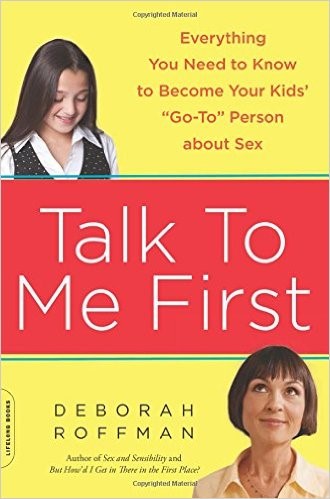How Do Birth Control Pills Work
This video follows the story of ‘Newbie’ in their journey of learning how birth control pills work. The video takes places inside the uterus, as ‘Newbie’ gets a tour of the reproductive system and how it is affected by birth control pills. The video also dispels some common myths about birth control.
Once you start to go through puberty, it’s possible to get pregnant or get someone pregnant, which is why it’s important to be familiar with different ways to prevent pregnancy. When people use birth control, or contraception, they use a medicine, medical device or barrier like a condom to keep a sperm and an egg from uniting. Some birth control, like the Pill, the Patch and the Shot, are medicines that keep the ovary from releasing an egg or ovum. Other birth control methods help create a barrier at the opening of the cervix to keep sperm from getting inside the uterus to find an egg. Abstinence, or choosing to not have or delay having sex, is the most effective form of birth control. [AMZ-145]
Youth
Birth control pills, sometimes called ‘the pill’, are medicines that a person takes every day to prevent pregnancy. In many places, you need a prescription to get the pills. Pills come in packs, and there are many different brands and varieties. Your medical provider will talk to you about your needs to determine which pill type is right for you.
It’s important to remember that no matter what type of pill you take, NONE of them protect you from STIs (sexually transmitted infections), which includes HIV. Using the pill and a condom (internal or external) is the best way to prevent pregnancy and STIs (besides abstinence).
Birth control pills contain hormones; usually estrogen and progestin, but sometimes only progestin. These hormones are the same ones that our body naturally makes. Taking the pill changes the menstrual cycle (your period) and prevents pregnancy in two main ways. First, the pill prevents the ovaries from releasing an egg (called ovulation). If there is no egg, then a sperm has nothing to fertilize and a pregnancy can’t happen. Next, taking the pill creates a layer of mucus over the cervix (opening of the uterus) that makes it difficult for sperm to get through.
In order for the pill to work best, the person needs to take it every day around the same time, even if they aren’t planning on having sex. It also takes about a week for the pills to work, so if a person is having sexual intercourse, they should use a back-up method (like a condom) for at least 7 days.
Like any medication, there can be side effects when using the pill. Common side effects are headaches, nausea, sore breasts, changes in your period (early, late, or stopping all together), or light bleeding in-between your periods (spotting).
Birth control pills, when used correctly, are an effective way to prevent pregnancy. However, missing even one pill can increase chances that a pregnancy happens, so taking your pills as directed by your medical provider is really important. If you aren’t able to take the pill at the same time each day, or you are worried you might forget to take them, another form of birth control (contraception) might be better for you. Some other options that work similar to the pill are the patch and the shot. Talk to your medical provider to decide what is best for you-the birth control method that you will actually use, will be the most effective.
Birth control pills, once prescribed, can be picked up at the pharmacy, or sometimes they will give them to you right in the clinic or doctor’s office. They usually cost between $0-$50 a month, depending on the type. Most teen-friendly clinics will have the pills for free or low-cost, so make sure you research online to determine where you should go.
FAQs
There are a lot of myths out there about if, how and when someone can or can’t get pregnant. The truth is, once you start to go through puberty, it’s possible to get pregnant or get someone pregnant. That’s why it’s so important to know how pregnancy happens and how to prevent it if you or your partner are not ready.
Birth control pills are a safe and effective form of birth control. Like every medicine, there can be small side effects. However, some people have no side effects at all. If you do have side effects, they usually only last 1-3 months as your body adjusts to taking the new medicine. Talk to your medical provider about possible side effects of different types of pills.
Some people take birth control pills to regulate their menstrual cycle. Other people have a shorter and lighter period while taking the pill. Taking birth control pills can also decrease acne and decrease menstrual cramps. If you need to take birth control pills for one of these reasons, the medical provider will help you make the right choice for you.
Birth control pills do not protect against sexually transmitted infections (STIs) or HIV. Using a barrier method like an internal or external condom AND birth control pills is the best way (besides abstinence) to protect against STIs and pregnancy.
Birth control pills are an effective form of birth control when taken correctly; at the same time each day and never missing a pill. If they are taken perfectly, they are 99% effective…however, people aren’t perfect, so the pills are typically about 93% effective. That means that 7 in 100 people might get pregnant each year on the pill. This is why it is important to take your pills at the same time each day, and to never miss a pill. There are some medications that can make the pill less effective (like some antibiotics). Talk to your medical provider any time you take a new medicine. Using a second method like an internal or external condom will also decrease the chances of unwanted pregnancy (and prevent STIs).
Test your knowledge
Parents
Birth control, or contraception, is a medicine, a medical device or a barrier like a condom to keep a sperm and an egg from uniting. Some birth control methods, like hormonal methods, work to keep the ovary from releasing an egg or ovum, while others help create a barrier at the opening of the cervix to keep sperm from getting inside the uterus to find an egg. Abstinence, or choosing to not have or delay having sex, is the most effective form of birth control. If someone chooses to have penile-vaginal sex, then using a condom and another form of birth control at the same time is the most effective protection possible because contraceptive methods other than internal or external condoms do not reduce the risk of sexually transmitted diseases (STIs).
The Pill, Patch, Ring and Shot
Birth control pills must be taken every day at about the same time. A package of birth control pills will last a month. They are very effective at preventing unintended pregnancy if they are taken as directed. Some methods of birth control, like the Patch and Ring, can prevent pregnancy for many weeks. A person needs to go to their health care provider or a family planning clinic to get a prescription for these methods of birth control. Many people who have penile-vaginal sex and use the Pill, Patch or Ring also use a condom to provide an additional layer of protection against pregnancy and reduce the risk of STIs.
Depo-Provera, also known as the Shot, is a contraceptive that is injected into a person every 12 weeks and provides protection against pregnancy during that time by preventing ovulation. Like other hormonal methods of birth control, the Shot releases a hormone into the body to keep the ovary from releasing an egg. The Shot also makes cervical mucus thicker, helping to keep sperm from getting to the egg.
Long-Acting Reversible Contraception (LARC)
Using a long-acting reversible contraception, sometimes called a LARC, along with a condom is the most effective protection against unintended pregnancy and STIs. LARCs include birth control methods like the contraceptive shot, the contraceptive implant and intrauterine devices (IUDs). Each is more than 99-percent effective at preventing an unplanned pregnancy and lasts a long time.
The contraceptive implant, sometimes called Nexplanon, is about the size and shape of a matchstick. The implant releases hormones into the body to prevent pregnancy. The hormone keeps the ovaries from releasing an egg and also thickens the cervical mucus to stop sperm from getting into the uterus to find an egg. A nurse or doctor inserts the implant into your upper arm. It can provide up to three years of protection against pregnancy.
The IUD is a small piece of flexible plastic shaped like a T. A health care provider inserts the IUD into the uterus. Some IUDs have copper wire, while others release hormones into the body. Both make it difficult for sperm to get to an egg. IUDs can last for years depending on which one a person has inserted. Some last for up to five years and some for up to 12! When a person is ready to have a baby, a health care provider can simply take the IUD out, and a person is able to get pregnant after that.
While all of these hormonal methods are highly effective at preventing pregnancy, none provide protection against STIs. So it’s important to also use a latex condom when you have sex.
Conversation Starters
Parents or guardians can start talking with their children about pregnancy and how to prevent it before their children become sexually active. When parents and guardians
talk with their children about these topics, children learn that they can come to their parents if and when they have questions. Below are some ways to start these conversations:
“Do you think those two characters are ready to deal with a pregnancy?” You could also ask, “How do you think they could have prevented the pregnancy?”
If your child is asking questions, that means they trust you. Avoid shaming them, and answer openly and honestly. It’s okay to say ‘I don’t know’, take some time to watch AMAZE videos together, and talk about what you have learned. You can also say, “why do you think some people use birth control?” or “I’m so glad you asked me, I don’t know a lot, but let’s find out together”. Discuss your family values around pregnancy and birth control, and give your young person space to ask questions and be curious.
Educators
Birth control, or contraception, is a medicine, a medical device or a barrier like a condom to keep a sperm and an egg from uniting. Some birth control methods, like hormonal methods, work to keep the ovary from releasing an egg or ovum, while others help create a barrier at the opening of the cervix to keep sperm from getting inside the uterus to find an egg. Abstinence, or choosing to not have or delay having sex, is the most effective form of birth control. If someone chooses to have penile-vaginal sex, then using a condom and another form of birth control at the same time is the most effective protection possible because contraceptive methods other than internal or external condoms do not reduce the risk of sexually transmitted diseases (STIs).
The Pill, Patch, Ring and Shot
Birth control pills must be taken every day at about the same time. A package of birth control pills will last a month. They are very effective at preventing unintended pregnancy if they are taken as directed. Some methods of birth control, like the Patch and Ring, can prevent pregnancy for many weeks. A person needs to go to their health care provider or a family planning clinic to get a prescription for these methods of birth control. Many people who have penile-vaginal sex and use the Pill, Patch or Ring also use a condom to provide an additional layer of protection against pregnancy and reduce the risk of STIs.
Depo-Provera, also known as the Shot, is a contraceptive that is injected into a person every 12 weeks and provides protection against pregnancy during that time by preventing ovulation. Like other hormonal methods of birth control, the Shot releases a hormone into the body to keep the ovary from releasing an egg. The Shot also makes cervical mucus thicker, helping to keep sperm from getting to the egg.
Long-Acting Reversible Contraception (LARC)
Using a long-acting reversible contraception, sometimes called a LARC, along with a condom is the most effective protection possible against unintended pregnancy and STIs. LARCs include birth control methods like the contraceptive shot, the contraceptive implant and intrauterine devices (IUDs). Each is more than 99-percent effective at preventing an unplanned pregnancy and lasts a long time.
The contraceptive implant, sometimes called Nexplanon, is about the size and shape of a matchstick. The implant releases hormones into the body to prevent pregnancy. The hormone keeps the ovaries from releasing an egg and also thickens the cervical mucus to stop sperm from getting into the uterus to find an egg. A nurse or doctor inserts the implant into your upper arm. It can provide up to three years of protection against pregnancy.
The IUD is a small piece of flexible plastic shaped like a T. A health care provider inserts the IUD into the uterus. Some IUDs have copper wire, while others release hormones into the body. Both make it difficult for sperm to get to an egg. IUDs can last for years depending on which one you get. Some last for up to five years and some for up to 12! When a person is ready to have a baby, a health care provider can simply take the IUD out, and a person is able to get pregnant after that.
While all of these hormonal methods are highly effective at preventing pregnancy, none provide protection against STIs. So it’s important to also use a latex condom when you have sex.
National Sex Ed Standards
List at least four methods of contraception that are available without a prescription (e.g., abstinence, condoms, emergency contraception, withdrawal)
Develop a plan to eliminate or reduce risk of unintended pregnancy or STDs (including HIV)
International Technical Guidance on Sexuality Education
Discussion Questions
- What are the ways birth control pills work that you learned about in this video?
- What is the most effective way for someone to prevent pregnancy if they are not ready or don’t want to have a baby?
- What is the most effective way for someone to prevent pregnancy and STIs if they are sexually active?
- Where could you get more information if you still have questions about birth control (contraceptives)?




